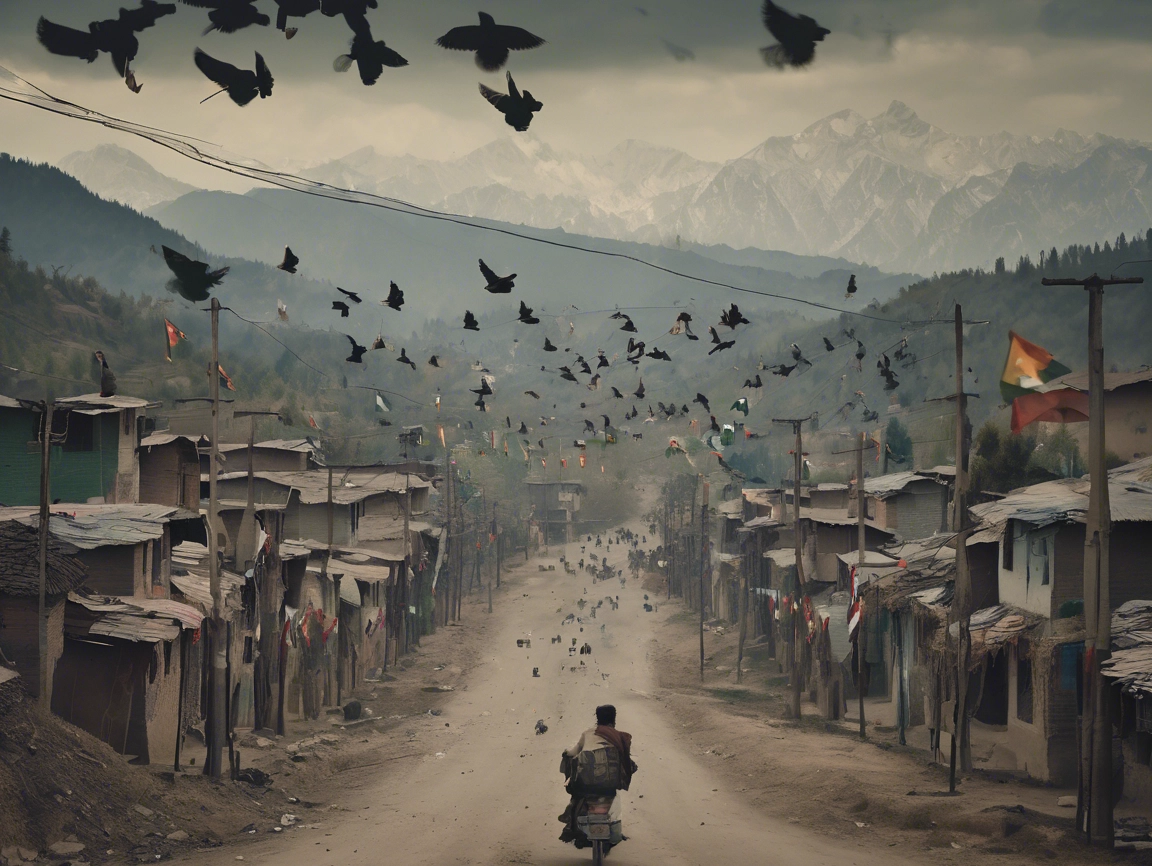On May 10, 2025, India and Pakistan, two nuclear-armed neighbors with a history of tense relations, agreed to a “full and immediate ceasefire” following days of intense military escalation. This blog explores the context, significance, and implications of this ceasefire, particularly in light of recent events in the disputed region of Kashmir.
Background: A Volatile Conflict
The ceasefire comes after a sharp escalation in hostilities triggered by a deadly terrorist attack on April 22, 2025, in Pahalgam, Indian-administered Kashmir, which killed 26 civilians, mostly Hindu tourists. India blamed Pakistan for the attack, alleging it was orchestrated by militants operating from Pakistani territory. Pakistan denied the accusations, but public outrage in India, coupled with calls for decisive action, led to India launching “Operation Sindoor” on May 7. This operation involved airstrikes on nine alleged terrorist infrastructures in Pakistan and Pakistan-administered Kashmir, killing at least 100 terrorists, according to Indian officials.
Pakistan responded with counterstrikes, including drone attacks and missile launches targeting Indian military bases, marking the most serious confrontation between the two nations in decades. The conflict saw significant casualties, with Pakistan reporting at least 26 deaths, including civilians, and India confirming civilian and military losses. Both sides accused each other of targeting civilian infrastructure, with notable incidents including strikes on a mosque in Muzaffarabad and shelling in Jammu.
The Ceasefire Agreement
The ceasefire was announced on May 10, 2025, following U.S.-mediated talks involving high-level diplomacy from U.S. President Donald Trump, Secretary of State Marco Rubio, and Vice President JD Vance. Trump first shared the news on his Truth Social platform, with both nations confirming the agreement shortly after. Pakistan’s Foreign Minister Ishaq Dar described it as a “full-fledged” ceasefire, facilitated by three dozen countries, including Saudi Arabia. The agreement, effective from 5 p.m. on May 10, stipulates an immediate halt to all military actions on land, air, and sea, with the directors general of military operations from both countries set to reconvene on May 12.
The ceasefire was met with relief in both nations. In Pakistan, people celebrated in cities like Multan, exchanging sweets and chanting patriotic slogans. In India, Jammu and Kashmir Chief Minister Omar Abdullah welcomed the truce, calling it “better late than never.” However, India emphasized that the ceasefire is conditional, warning that future escalations would be met with decisive action.
Significance of the Ceasefire
This ceasefire is a critical step toward de-escalation, particularly given the nuclear capabilities of both nations. The conflict’s intensity, including strikes on mainland Pakistan and retaliatory attacks near Islamabad, raised fears of a broader war. The agreement averts this risk for now and provides a window for dialogue. Key aspects of its significance include:
- Humanitarian Relief: The ceasefire halts civilian casualties and allows displaced families near the border to return home. Pakistan reopened its airspace, and India resumed some civilian flight operations, signaling a return to normalcy.
- Diplomatic Momentum: The involvement of the U.S., G7 nations, and others underscores global concern over the conflict. The ceasefire sets the stage for talks on broader issues, potentially at a neutral site, as suggested by Rubio.
- Kashmir Focus: The ceasefire reinstates, at least temporarily, the Line of Control (LoC) as a de facto boundary, though underlying disputes over Kashmir remain unresolved.
Challenges and Concerns
Despite the optimism, challenges persist:
- Fragility of the Truce: Past ceasefires, like the 2003 agreement, have been violated, and mutual distrust remains high. India’s decision to keep the Indus Waters Treaty in abeyance and maintain visa restrictions signals ongoing tensions.
- Misinformation: Both sides have accused each other of spreading fake news, such as Pakistan’s claims of Indian strikes on Afghanistan or a captured Indian pilot, which India debunked. Sustaining the ceasefire will require curbing such narratives.
- Unresolved Issues: The ceasefire does not address the root causes of the conflict, particularly the Kashmir dispute. Without progress on this front, future flare-ups are likely.
Looking Ahead
The ceasefire offers a rare opportunity to pause and reflect. For it to lead to lasting peace, both nations must engage in direct dialogue, as urged by the G7 and other international actors. India’s all-party meeting, chaired by Prime Minister Narendra Modi, and Pakistan’s diplomatic outreach suggest a willingness to stabilize the situation, but political will is needed to tackle deeper issues.
The international community, particularly the U.S. and China, which has expressed concern, must continue to support de-escalation efforts. Civil society and media in both countries can also play a role by promoting accurate information and fostering goodwill.
Conclusion
The India-Pakistan ceasefire of May 10, 2025, is a vital step away from the brink of war, offering relief to millions affected by the recent violence. While it does not resolve the longstanding Kashmir conflict or other bilateral tensions, it creates space for diplomacy and rebuilding trust. The world watches closely as these two nations navigate the delicate path toward peace.
Call to Action
Stay informed about this evolving situation through reliable sources. Share this blog to raise awareness about the importance of the ceasefire and the need for sustained peace efforts. Support organizations working on humanitarian aid and conflict resolution in the region.
Share this content:





Casino mirror avoids DNS-level censorship
Join BitStarz for top-tier crypto gambling, start with a generous $500 bonus and 180 FS, with top-rated VIP rewards. Access via working mirror site.
Battery Aviator download for mobile phones
Get smarter with this aviator game review
Get mikrokredit instantly without documents
🎮 Игра Лаки Джет: Правила, стратегии, советы — начни выигрывать!
Use casino mirror to get around government blocks
Uncover the secrets of Lucky Jet with full excitement.
Play casino games uninterrupted with the help of mirrors.
No signup needed for demo Aviator game download mode.
Lerne neue Spielstrategien im LeonBet Blog.